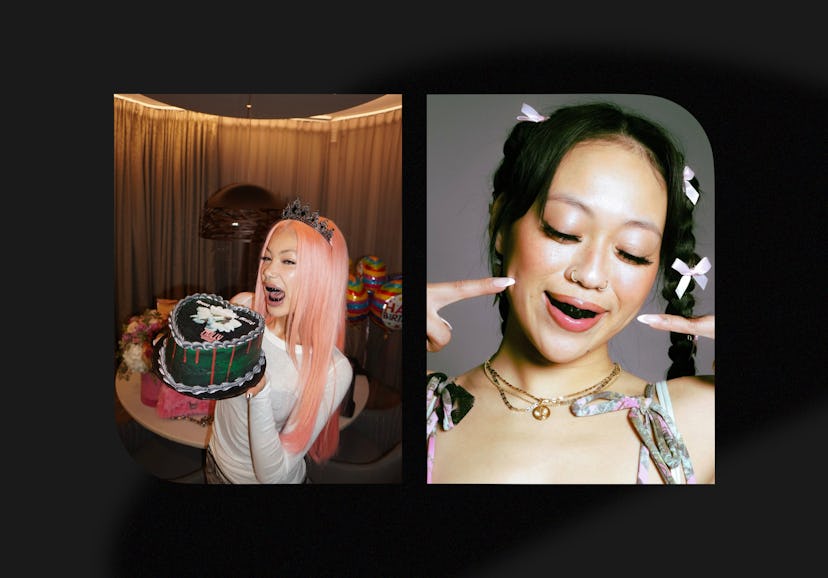Viral
Here's Where The Teeth Blackening Trend All Over TikTok Comes From
North West tried the look for a concert, but it actually comes from an ancient tradition.

In the midst of veneer culture, a very different look is circulating on the fringes of Gen Z: jet-black teeth. The latest to debut the style? None other than North West, whose recent TikTok — featuring a blacked-out smile and fake face tattoos — sparked a swirl of fascination online. But what many viewers of her video might not realize is that teeth blackening is a centuries-old tradition now finding new resonance among young people interested in aesthetic experimentation, particularly within the “Opium” subculture.
Where’d The Trend Come From?
Long before whitening strips, the practice of blackening one’s teeth was a beauty trend across Asia. In Japan, for example, ohaguro (meaning “black teeth”) involved soaking iron fillings in vinegar with sake or tea and drinking the resulting liquid to color the teeth — a ritual that was especially popular among women of the aristocracy from the 10th century onward. The inky sheen contrasted with their white-powdered faces (another hallmark of Heian- and Edo-period beauty), symbolizing a young woman’s elegance, coming of age, and maturity.
The iron-based coating wasn’t purely aesthetic. It acted as a natural sealant against tooth decay. The custom persisted until 1870, when Western influence — and the Meiji government’s push to “modernize” Japan — reframed white teeth as the new ideal.
But teeth blackening wasn’t limited to Japan. The broader concept appeared in Vietnam, China, and other regions of Southeast Asia, where a black smile represented not just beauty, but spiritual protection. In Vietnam, particularly, white teeth were thought to resemble ghosts, ghouls, and wild animals — making dark teeth a form of defense against them. The nhuộm răng (or blackening) process took weeks: citrus juice and rice wine prepared the teeth for dyeing; then ingredients like burnt coconut shells or iron solutions provided the pigment.
The Teeth-Blackening Beauty Revival
Fast-forward to 2025, and the once obsolete beauty ritual is resurfacing in the underground rap world. Artists and it-girls, especially those who are Asian or have an African heritage like Sukii Baby and Molly Santana, are rocking what is now being referred to by some as “black grills,” reclaiming the tradition with a modern twist.
At the same time, the black teeth revival is slowly seeping into what’s been dubbed “Opium” style — a fashion subculture spun from Playboi Carti’s record label of the same name. Think all things Rick Owens and Chrome Hearts: heavy draping, leather, facial piercings, and major influences from goth and punk scenes.
In fact, North West’s blackened teeth were part of her concert look for Ken Carson, one of Carti’s Opium labelmates.
But as often happens when trends get repackaged online, black teeth have made their viral rounds sometimes without a full understanding of their historical context. TikTokers who are trying out a method of painting their teeth black with FX makeup should be aware of the practice’s cultural history.
A ritual once rooted in identity can, within the space of a 15-second video, be stripped of its context and repackaged as a “weird new Gen Z beauty trend.” So while teeth blackening is occurring again within the avant-garde world of Opium, it shouldn’t just be reduced to shock value.
Fortunately, today’s reemergence of blackened teeth — when done with knowledge of its historical context — offers an opportunity to acknowledge the cyclical and global nature of beauty standards and the trends those standards create. It’s a story seen time and time again: what was once old becomes new again.